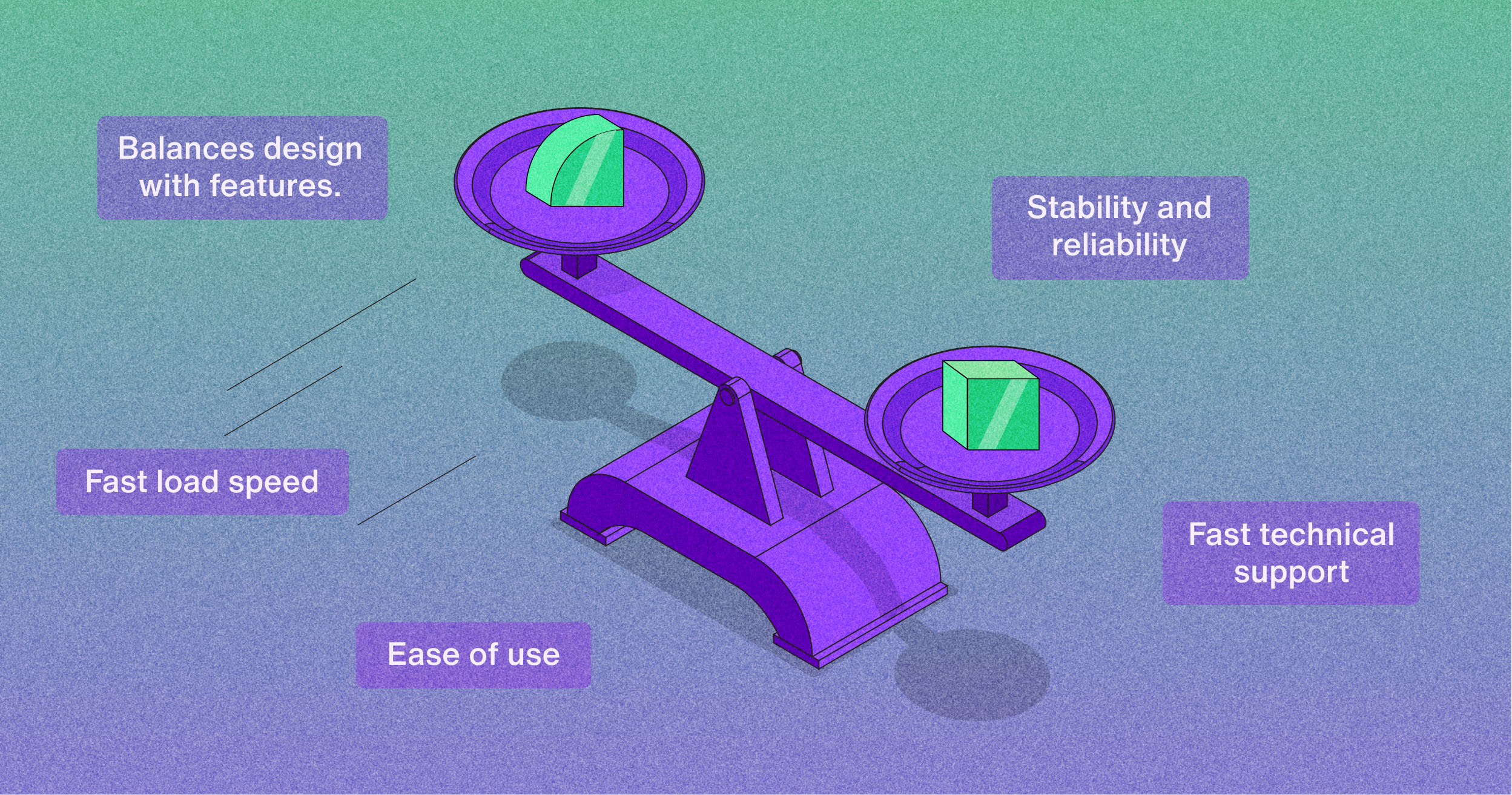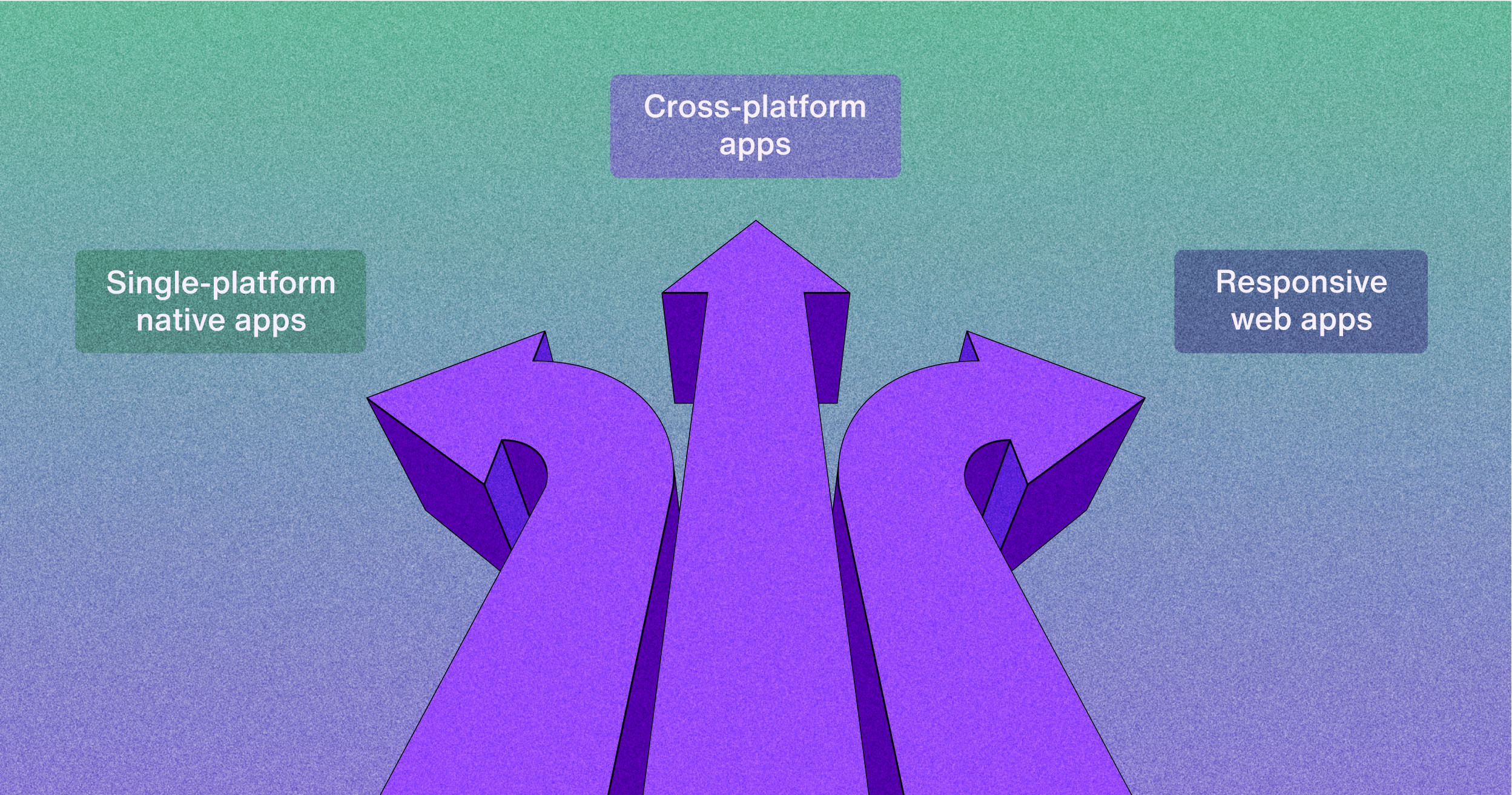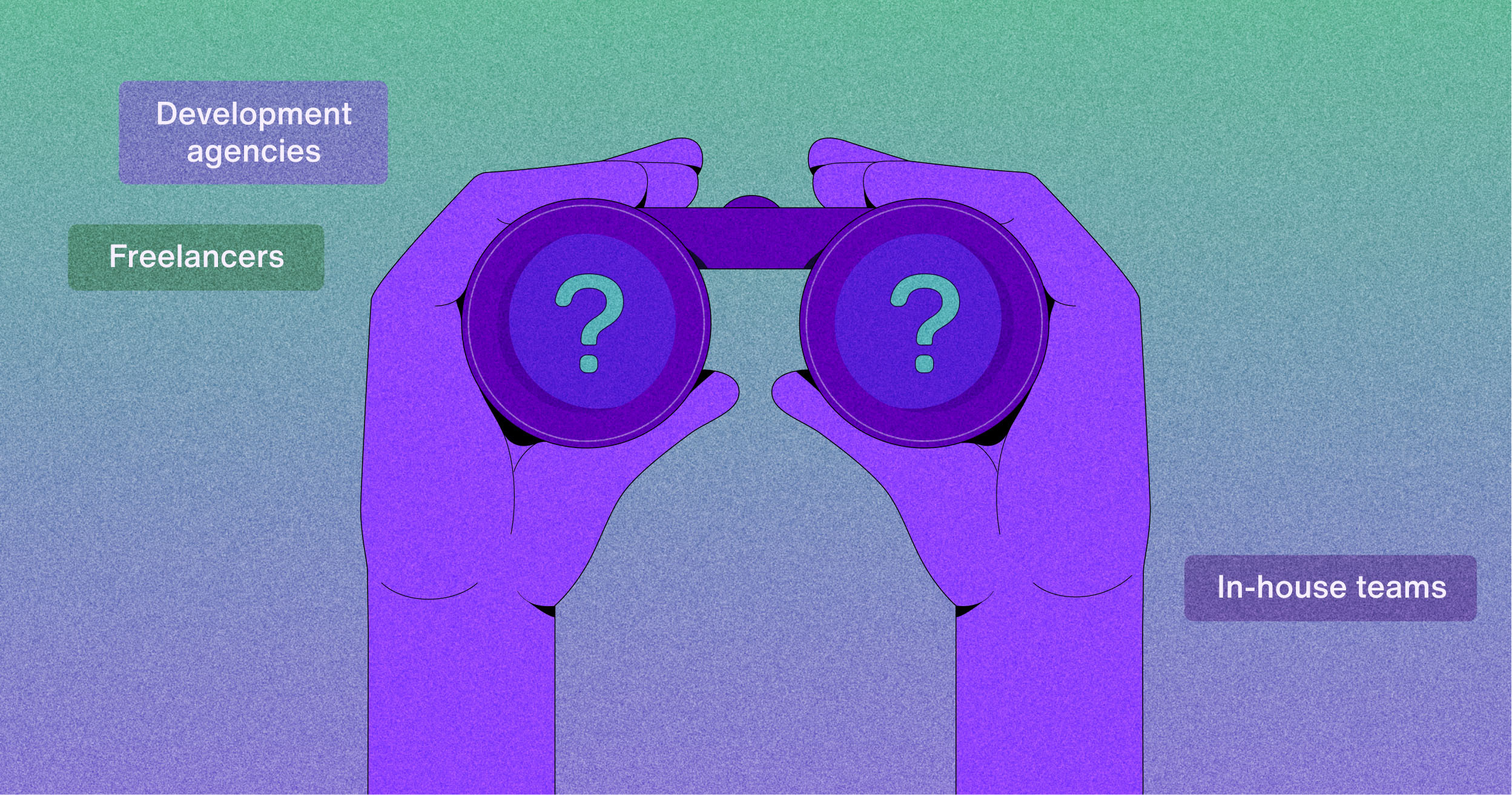How to make a successful mobile app in 2023

A Gartner study found that of all the apps built in 2018, only one in every 10,000 became financially successful. That means that for every 10,000 apps built, 9,999 of them failed — a 0.01% success rate.
What makes those few apps successful? And what makes this success so difficult to recreate? For one, apps are expensive to develop — exacerbated by the fact that users can download apps for free (and users often expect them to be free). There are also tons of mobile apps out there (thousands go live every day), meaning even if you build the best app in the world, it has a lot of competition.
In this article, you’ll find out what makes a good app, app development tips, features of popular apps, and a complete list of tips for making your app successful.
What makes an app successful?
The answer is simple: meeting users' needs while also meeting business needs. Getting there seamlessly, now that’s the hard part.
An app designed solely to generate income may not be successful if it doesn't resonate with your target audience. On the other hand, an app designed with customers in mind with no plan for ROI won’t be financially viable.
Ultimately, the key to striking a balance between meeting customers' needs and meeting business needs is to focus on providing a solution that adds value to both the users and the business. Creating a mobile app that meets the needs of the target audience while also aligning with your business objectives makes it possible to create a successful app that is sustainable in the long run.
Features of successful apps that meet customers' needs

Balances design with features. The app should be visually appealing but highly tailored to user needs, including valuable features that fit its target use cases.
Fast load speed. The app should have high download speeds so navigating and using it feels instantaneous.
Ease of use. The UI and UX should be self-explanatory. There should be no need for instructions or lengthy explanations in order to use the app.
Stability and reliability. The app should be stable and dependable.
Fast technical support. No matter how reliable an app is, its users will still encounter issues. When they do, they should have access to fast, comprehensive support to correct the problem.
Features of apps that meet business needs
Easy updates. Your app will be flawed right out of the gate. You need to be able to ship updates quickly and whenever needed.
Protection. Your app should protect users' information and have strong safeguards against data breaches.
Cost-effective maintenance. Your app needs to support future development, whether by generating its own revenue or through support from another of your business's income streams. Estimates say software maintenance costs, on average, 15-20% of the original development cost.

[FREE TOOL] How does your app's engagement score compare to industry standards?
11 tips for developing a successful mobile app
With the features of successful mobile apps in mind, you're ready to learn how to develop a successful app — from the beginning. From planning to development to deployment, these 11 app development tips will set you up to be the one in 10,000 that succeeds.
1. Define your app’s business model
A successful app needs to start with a strong foundation.
Defining and planning a business model for your app means considering some key factors:
Your target audience. Who is your app for, and what problem does it solve? Understanding your target audience and their needs is a crucial first step toward defining your business model.
Your revenue model. Several revenue models include subscriptions, in-app purchases, advertising, and paid downloads. Consider which one is the best fit for your app — and its target users.
Your costs. What will it cost to develop and maintain your app? Think about development, marketing, and ongoing maintenance and support costs.
Your pricing strategy. You determine your app's pricing strategy based on your revenue model and costs. Your goal should be for your app to generate enough revenue to cover its costs — and then start making a profit.
Your marketing plan. How will you promote your app to its target audience? Consider which channels are most effective for reaching your audience, such as social media, app stores, or paid advertising.
If your business plan includes answers to these questions, it'll be a solid start — but these are not all the questions a business plan needs to answer. Other considerations will depend on your industry, size, and other factors. And remember that any business plan is a living document — you can and should make adjustments as you develop your app, learn new things, and collect more data.
2. Plan out your features
If you're planning to create an app, you probably already know what you want it to do — or, at least, what problem you want it to solve.
There are essentially infinite features to be added to any app. Have you considered social sharing? Notifications? Payments? Integrations with other tools? Now that you're thinking about all those things, do they seem indispensable?
It's likely that there are many features you could add and that they would make your app more valuable to its target audience. At this stage, you can brainstorm all the features you want to offer eventually — but prioritizing them is equally important.
Once you have a list of potential features, prioritize them based on their importance and feasibility. Consider factors like user needs, development time, cost, and impact on the user experience to decide which features are necessary for the first iteration of your app and which can be added in later updates, as time and budget allow.
3. Choose the correct development approach

There are three main approaches you can take to building a mobile app:
Single-platform native apps are coded for specific platforms (like iOS or Android). Native apps leverage the device's hardware and functionality for a better user experience.
Cross-platform apps use a shared codebase that can be deployed on multiple platforms. The functionality for these apps is more limited since you can't harness the power of the device's hardware. However, a cross-platform app can be used by more people since they aren't limited based on the type of mobile device they use.
Responsive web apps exist online rather than downloaded onto the user's mobile device. This gives them more flexibility since they can be accessed via a web browser on any device. But without this can come with drawbacks, too — depending on how you build your web app, your users may not be able to access it from their home screen, or you may not own valuable user data.
4. Design an intuitive UI (or use the Sendbird UIKit)
Your app needs to be intuitive. Users should be able to figure out how to navigate and use it without extensive instructions or tutorials.
Sendbird's UIKit has ready-made UI components for React, iOS, Android, and React. Learn more about the Sendbird UIKit.
5. Find a team

When it comes to who will build your app, you have a few options:
Freelancers. Freelance developers are a common choice for companies that need to build their mobile apps on a budget. There are risks associated with freelancers (they could forge or embellish their experience, for example), but if you need to meet tight budget constraints, they may be the right path for you.
In-house teams. Another option is to build your team by hiring individuals for your business. This option can be costly, especially after you add up recruitment, onboarding, salaries, benefits, and operational costs for the entire team. But this gives you more control over your app and how it's built.
Development agencies. Many companies that don't want to build in-house teams hire app development agencies, allowing you to "lease" a team for as long as needed. Agencies do all the upfront work of recruiting, hiring, and training engineers, designers, project managers, and more. However, the best agencies are in high demand, and their retainers and fees will likely reflect that.
6. Get everyone on board
Once you've built your team, it's time to bridge the gap between creative planning and execution. You and your team will work together to create a plan that fits within the team's capabilities and the resources you must dedicate to the project. You'll want to have at least one (but likely multiple) scoping sessions where you talk about your goals for your app, your must-have features, and other considerations.
Scoping meetings will ensure everyone has expectations about what's realistic to deliver in the final app. Each development team member should understand what you want, how it's supposed to work, and the value it's supposed to provide for users. Remember, though, that you may need to compromise some of your initial goals depending on the resources you and your team have available.
7. Ensure your app is secure
Security is a critical aspect of all mobile apps. You should be planning for security from the beginning by following these steps:
Follow best practices for secure coding. Secure coding practices like input validation, data encryption, and secure communication protocols help protect against common attacks like SQL injection and cross-site scripting (XSS).
Use secure authentication and authorization methods. Use strong password policies and implement two-factor authentication to verify your app users' identities. Use role-based access controls to ensure that users can only access data and functionality they need to access.
Encrypt sensitive data. User passwords, financial information, and other sensitive data must be encrypted, both in transit and at rest.
Implement secure data storage. Use secure data storage practices, such as hashing and salting passwords, to protect user data in case of a breach.
Conduct regular security audits. Regular security testing, including penetration testing and vulnerability assessments, will help identify potential security vulnerabilities over time.
8. Prepare a go-to-market strategy
When your app is nearing completion, it's time to focus on your go-to-market plan, covering how you market and distribute your app and how you'll gain market share.
You may have different go-to-market strategies for different segments of your target audience. For each, you'll want to:
Plan marketing campaigns, including pre-launch, launch, and post-launch marketing efforts. Consider the marketing types that will most likely reach your target audience; for example, content marketing, social media, paid search, influencer marketing, PR outreach, and other strategies.
Launch and promote your app using all the channels and marketing campaigns you've identified and planned.
Collect metrics and analyze results. Use analytics tools to track your app's performance and your marketing campaigns' success. Collect user feedback to look for more opportunities to improve your app and marketing efforts.
9. Make regular updates
Once you launch your app, your work is far from over. Mobile apps need to be maintained and enhanced over time with regular updates.
You'll need to fix bugs, address technical issues, build new features, and update your app with modern technology and user needs. You'll also need to stay up-to-date on any changes to the operating systems that support your all, so you can ensure it still operates like it's supposed to over time.
In addition to rolling out new features, you'll want to streamline and refine your app. Try to simplify your existing processes (like onboarding new users, for example) to make your app more straightforward and more cost-effective, boosting your revenue over time.
10. Provide messaging features
Today's mobile app users have different expectations than they used to. More and more, they expect to be able to reach someone via messaging features in an instant — and they expect the person on the other side of the chat to be a person, not a bot.
For companies building mobile apps, this presents a challenge: Building a full-featured chat platform within your app is complex (not to mention expensive).
Luckily, you don't have to build it yourself. Instead, you can use Sendbird's communications API platform.
With APIs, native chat SDKs, UIKits, comprehensive support, and countless pre-built integrations, Sendbird makes it fast, easy, and affordable for companies to roll out chat programs in their mobile apps. You still get complete control over the UI (including being able to customize Sendbird to match your app design and branding). But you also get plug-and-play chat features that are infinitely scalable and automatically maintained and updated, so you can focus your time (and resources) on what you're best at.
Ready to see Sendbird in action? Schedule a call with our sales team today.
11. Provide messaging features
There are many different ways you can track the success of your mobile app. Some common metrics include:
Downloads
Active users
User retention
User engagement
Conversions
Revenue
User feedback
Overall, a successful mobile app should achieve a balance between these metrics, with a high number of downloads and active users, a high retention rate, strong user engagement, a good conversion rate, and revenue growth over time.
Keep tabs on metrics that indicate success for your app based on your goals. Use data to inform changes in your marketing and update strategies to maximize success.
Talk to a sales expert
Learn more about our products and get your questions answered.
What makes a good app?
Building a successful mobile app requires careful planning and execution. From defining your target audience and unique value proposition to choosing the right team and distribution platforms, to implementing security measures and developing a go-to-market strategy, there are many steps to take and factors to consider.
By following best practices and staying up-to-date with the latest trends and technologies, you can create a mobile app that meets the needs of your users and achieves your business goals — setting your mobile app up to succeed.










